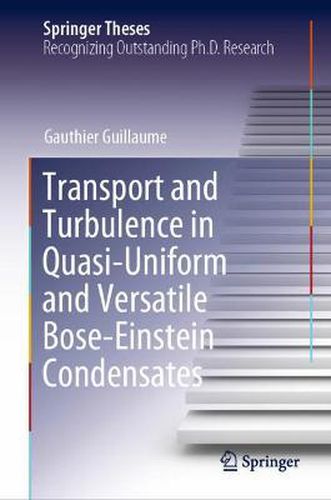Readings Newsletter
Become a Readings Member to make your shopping experience even easier.
Sign in or sign up for free!
You’re not far away from qualifying for FREE standard shipping within Australia
You’ve qualified for FREE standard shipping within Australia
The cart is loading…






This title is printed to order. This book may have been self-published. If so, we cannot guarantee the quality of the content. In the main most books will have gone through the editing process however some may not. We therefore suggest that you be aware of this before ordering this book. If in doubt check either the author or publisher’s details as we are unable to accept any returns unless they are faulty. Please contact us if you have any questions.
Advancing the experimental study of superfluids relies on increasingly sophisticated techniques. We develop and demonstrate the loading of Bose-Einstein condensates (BECs) into nearly arbitrary trapping potentials, with a resolution improved by a factor of seven when compared to reported systems. These advanced control techniques have since been adopted by several cold atoms labs around the world. How this BEC system was used to study 2D superfluid dynamics is described. In particular, negative temperature vortex states in a two-dimensional quantum fluid were observed. These states were first predicted by Lars Onsager 70 years ago and have significance to 2D turbulence in quantum and classical fluids, long-range interacting systems, and defect dynamics in high-energy physics. These experiments have established dilute-gas BECs as the prototypical system for the experimental study of point vortices and their nonequilibrium dynamics.
We also developed a new approach to superfluid circuitry based on classical acoustic circuits, demonstrating its conceptual and quantitative superiority over previous lumped-element models. This has established foundational principles of superfluid circuitry that will impact the design of future transport experiments and new generation quantum devices, such as atomtronics circuits and superfluid sensors.
$9.00 standard shipping within Australia
FREE standard shipping within Australia for orders over $100.00
Express & International shipping calculated at checkout
This title is printed to order. This book may have been self-published. If so, we cannot guarantee the quality of the content. In the main most books will have gone through the editing process however some may not. We therefore suggest that you be aware of this before ordering this book. If in doubt check either the author or publisher’s details as we are unable to accept any returns unless they are faulty. Please contact us if you have any questions.
Advancing the experimental study of superfluids relies on increasingly sophisticated techniques. We develop and demonstrate the loading of Bose-Einstein condensates (BECs) into nearly arbitrary trapping potentials, with a resolution improved by a factor of seven when compared to reported systems. These advanced control techniques have since been adopted by several cold atoms labs around the world. How this BEC system was used to study 2D superfluid dynamics is described. In particular, negative temperature vortex states in a two-dimensional quantum fluid were observed. These states were first predicted by Lars Onsager 70 years ago and have significance to 2D turbulence in quantum and classical fluids, long-range interacting systems, and defect dynamics in high-energy physics. These experiments have established dilute-gas BECs as the prototypical system for the experimental study of point vortices and their nonequilibrium dynamics.
We also developed a new approach to superfluid circuitry based on classical acoustic circuits, demonstrating its conceptual and quantitative superiority over previous lumped-element models. This has established foundational principles of superfluid circuitry that will impact the design of future transport experiments and new generation quantum devices, such as atomtronics circuits and superfluid sensors.